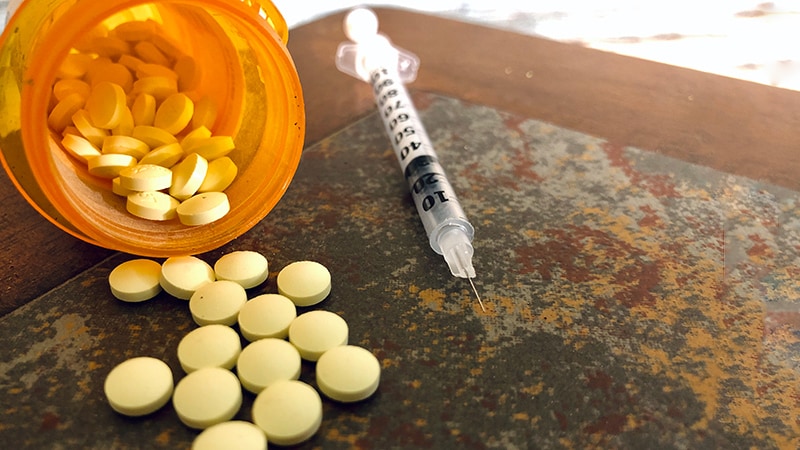In January 2017, during the height of the opioid crisis, nearly 400 clinicians in California received “Dear Doctor” letters from the San Diego County Medical Examiner notifying them that a patient to whom they had prescribed an opioid or other controlled substance had died from an overdose.

Dr Jason Doctor
The goal of the letter campaign was to determine whether the letters could shift prescribing behaviors away from opioids, said Jason Doctor, PhD, a behavioral scientist and policy researcher at the University of Southern California in Los Angeles.
The strategy worked, as Doctor and his colleagues, including Jonathan Lucas, MD, then deputy medical examiner of San Diego County and now the LA County coroner, reported in a 2018 study in the journal Science. In a new analysis, published today in JAMA Network Open, the investigators show that the effect of the notifications lasts at least a year.
The results of the two studies show a 9.7% decrease in prescriptions filled for morphine milligram equivalents up to 3 months after receipt of the letter and a 7.1% decrease at 12 months. The numbers for the intervention group were compared to those for a control group of 447 prescribers. The letters were issued by random assignment.
“In addition, the trial found a decrease in new patients and patients taking a high dose of opioids in the panels of those clinicians receiving the letter,” the researchers report.
The clinicians who received letters included mostly allopathic and osteopathic physicians (72%) and physician assistants (11%); the remainder were nurse practitioners and dentists (17%).
“The study suggests that the clinicians made some changes into their practice, that they internalized this letter and, in a lasting way, were able to provide safer care,” Doctor told Medscape Medical News.
Doctor said clinicians may have reduced opioid prescriptions because they were aware of being observed. Another factor, he said, may have been a new statement from the Centers for Disease Control and Prevention aimed at reducing opioid abuse. Clinicians may also have developed an increased awareness of the harm that could come to their patients from taking the medications, he added.
Jonathan Zhang, PhD, an assistant professor of economics at McMaster University, in Hamilton, Ontario, Canada, who has researched the opioid epidemic, said the 2018 Science article “was highly influential because it was one of most low-cost and effective ways to reduce opioid prescribing. The result was also surprising because presumably physicians were already aware of the risks of opioids, and a single overdose is not going to get them to adjust their belief of the riskiness of opioids.”
Zhang noted that other studies have found that letters alerting clinicians that they are high prescribers have no effect on prescribing of opioids or combinations of opioids and benzodiazepines.
“While this does not answer all of our questions, it’s an encouraging finding because we might have expected the ‘fear of being monitored’ to disappear relatively quickly,” Zhang said. “The reduction in opioids over 1 year is substantial.”
Doctor said his team was cautious in setting the tone of the letters. They tried to be empathetic and to avoid accusations while enlisting the clinicians’ support in fighting the opioid epidemic.
“Our intention was not to shame the doctors or to blame them for the event,” Doctor told Medscape. “This is why we did not suggest the physician may be responsible. We also invited them to join us in helping fight this problem. We believed this would help them resolve any tension created by the letter and would let them know they were an important part of the clinical community.”
He said some clinicians wanted the researchers to know that they were not the primary source of the prescription for the patient in question. Others requested the full autopsy and other data. “We took that as positive,” he said.
Doctor said LA County, San Diego County, the city of Baltimore, and the state of Kentucky are among several jurisdictions in the United States that have mandated similar letters. He said he favored the adoption of this approach by public health agencies as opposed to law enforcement agencies.
In 2018, the Medical Board of California sent letters to clinicians “that could be interpreted as threatening ― notifying them of a patient’s death and saying that there could be legal ramifications. The reaction was horrible. A lot of physicians got lawyers, and they complained to the state and likely did not appear to have any effect on their prescribing.”
The authors have disclosed no relevant financial relationships.
JAMA Netw Open. Published online January 6, 2023. Full text
Howard Wolinsky is a Chicago-based medical writer. He edits the Substack newsletter TheActiveSurveillor.com on low-risk prostate cancer.
For more news, follow Medscape on Facebook, Twitter, Instagram, and YouTube.
Source: Read Full Article






